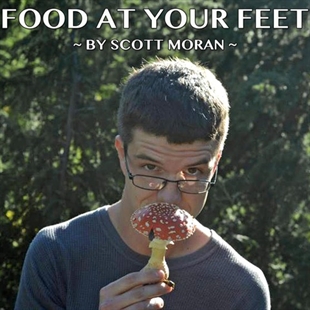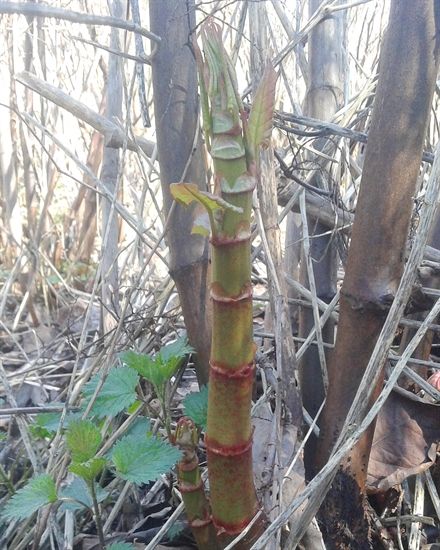
(SCOTT MORAN / iNFOnews.ca)
July 06, 2016 - 12:44 PM
CREATING A UNIQUE FOOD IDENTITY TO PASS DOWN TO OUR CHILDREN
OPINION
There is only one food that every Canadian would agree is 'Canadian' food. Maple Syrup. Maple syrup is also a wild product. Syrup producers make their living the same way I do. They aren't farmers, they are foragers.
I believe that Canadian food is wild food. Seafood, indigenous wild pants and berries, a plethora of invasives, and a few things in between. Asparagus is not a native plant, but it grows wild and is definitely not considered invasive. It is too bad we can't add wild meat to the list since it is not available for public consumption.
Food culture and identity are a big part of the way most people in this world take care of themselves. Traditional recipes with seasonal foods provided by your surroundings always contain magical secrets. Life-saving secrets! Whenever science goes deep into ancient diets, the news always seems to be good. The omega-3 laden Mediterranean diet is a perfect example. Across the world, the people with the least access to resources get their personal security through their diet. Locally we are at a disadvantage, with (generally) very little connection to our heritage and land through food. This means we have to teach ourselves how to eat, and we are.
The weight is on our shoulders to take new ingredients and new information, incorporating it all into our very busy lifestyles. What your average person knew about food 20 years ago, and what your average person will know about food 20 years in the future, are two very different things. The onslaught of new information will not stop. Most of the information won't be necessary if you limit yourself to seasonal and local ingredients in your diet.
To give a bit of my perspective, here are a couple examples of things we aren't doing but definitely could.
There is a terribly invasive plant growing across southern B.C. and the Lower Mainland. It also happens to be edible, tasty, and exceptionally nutritious. It is called Japanese Knotweed. So far, I have found it in five locations in the Kelowna area. The flavour is similar to rhubarb, but it is technically closer to sorrel. Sorrel is a leafy plant with a sour flavour. It is popular with chefs and can be found at your local farmers market. It has the same growing season as spinach.
As well as being related to sorel, Japanese Knotweed is a close relative to buckwheat and wild Dock. Dock can be seen along our urban highways this time of year in the form of large bunches of rust-coloured seeds on a tall, thick stem.
There are traditional recipes for Knotweed in Japan, but foragers and chefs in North America and Europe have had to teach themselves how to work with this edible invasive. It can be used for both sweet and savoury dishes. Indian-style chutney is a common favourite. It is also great pickled. With a bit of sugar and spice, knotweed can be cooked down for a pie/tart filling. Swap ingredients from ethnic recipes or make your own. Did I mention knotweed will sprout through your driveway, possibly even your living room? Eat up!
Japanese Knotweed can be harvested in the spring before the leaves form, while it resembles asparagus, it will eventually grow 6-10 feet tall and quickly becomes inedible.

Japanese Knotweed if left alone, will grow 6-10 feet tall and become inedible.
(SCOTT MORAN / iNFOnews.ca)
Hand-picked kelp is a tasty and sustainable way to enhance your food. Although not local, it is abundant on the west coast of B.C., and travels well dried. Kelp can be ground up and used as a salt replacement, be eaten raw as a salty, crunchy snack or garnish, or can add a new lay of flavour to a veggie stock. Unfortunately in stores you will mostly find heavily processed seaweeds from Asian oceans. There are several foragers working from B.C. selling dried seaweed online. It is worth sourcing it out. Kelp is harvested in B.C. two ways: By boat a tonne at a time, and then chipped and processed (stems and all) in a government facility. Also by hand, carefully, in a wet suit from a small boat or canoe, where it is then dried and packed whole. The final products do not compare. Always go for the hand-picked kelp.
It is important not to overlook the fact the we have some of the cleanest land in the world. We are fortunate to be able to harvest wild crops from the edge of town, the local field, your neighbor's backyard (if it is knotweed consider it a favour). It is good to be cautious, but we have less concern regarding pollution in our land and water than most people. Maybe we are the one per cent when it comes to that. Over time we could create a unique Canadian (and Thompson-Okanagan) food identity to pass down to future generations and live in cooperation with our environment, instead of plowing it.
— Scott Moran is a local forager discovering his own path to food freedom
News from © iNFOnews, 2016